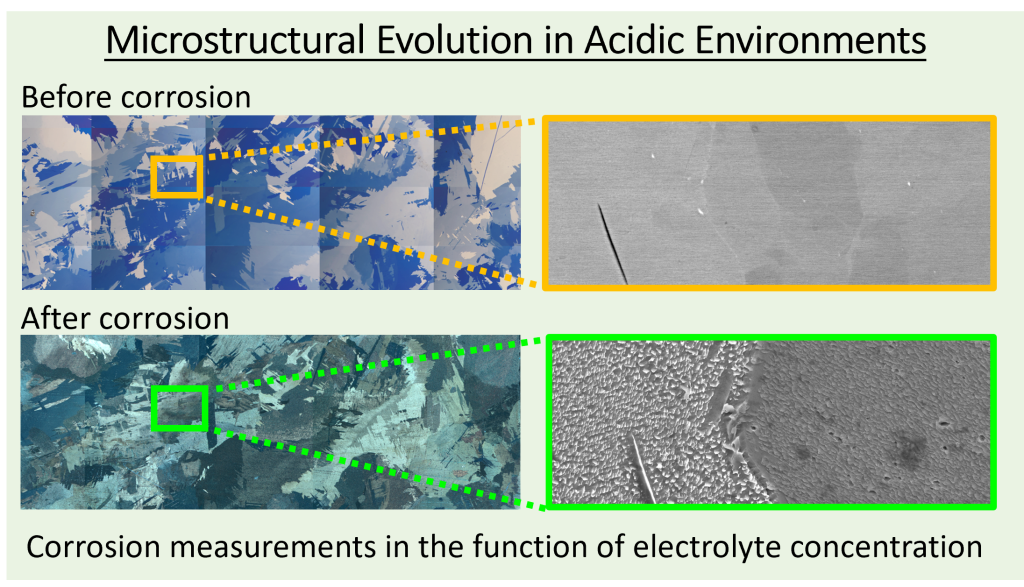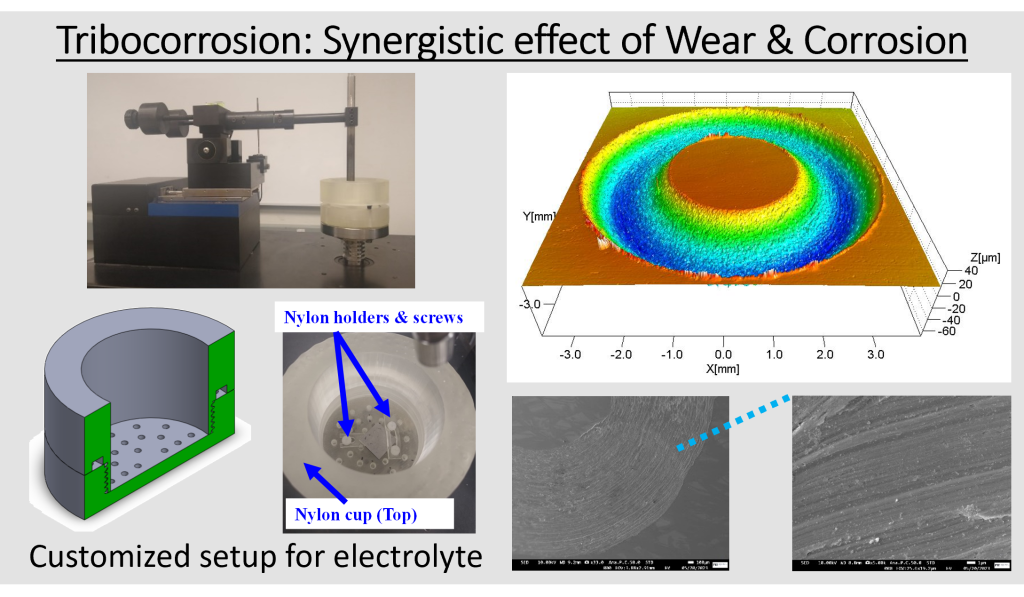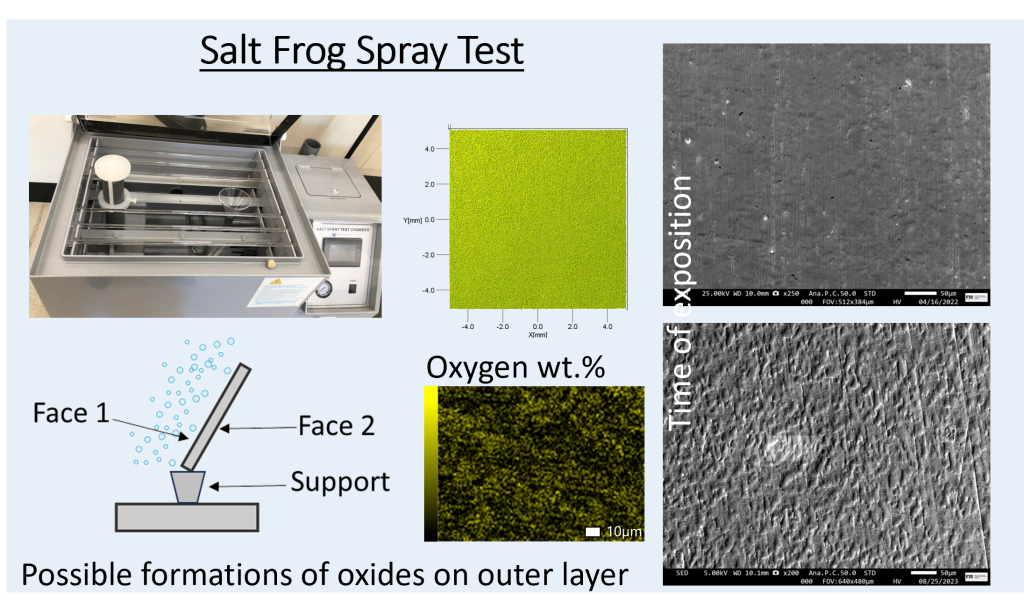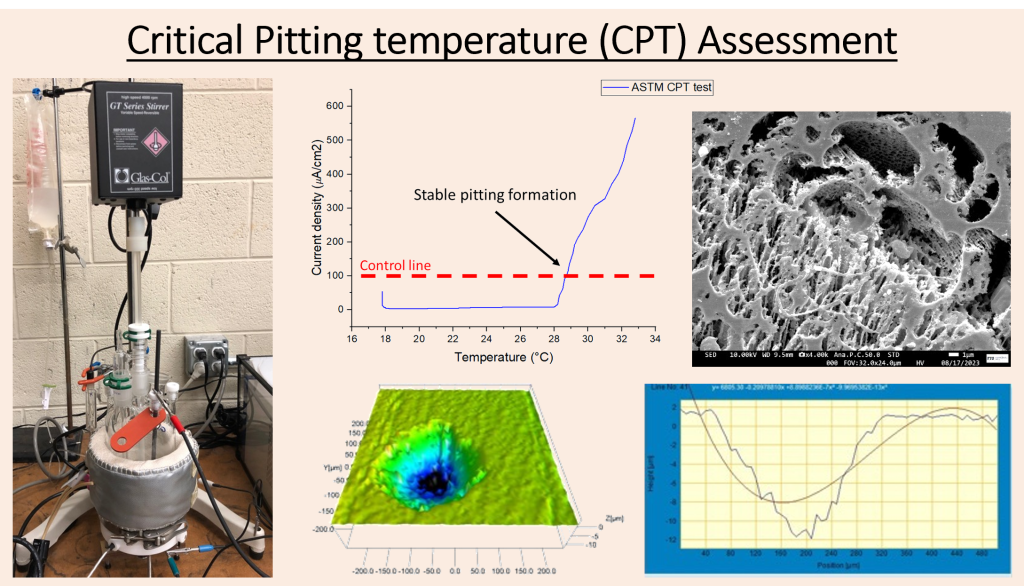Tribo-corrosion and Electrochemistry in WAAM-ed Metals

Our lab is dedicated to exploring Wire-Arc Direct Energy Deposited (WDED) materials in order to advance the development of the next generation of structural components. We focus on understanding surface phenomena like corrosion resistance and wear mechanisms, which are crucial for various industries, including marine, offshore, nuclear power generation, advanced manufacturing, and batteries.
Components can undergo microstructural changes due to environmental or operational conditions, potentially compromising their integrity and performance. The way these materials are manufactured, especially through the layer-by-layer process in WDED, significantly influences their microstructure. This process leads to grain size and morphology variations, affecting the material’s properties due to the complex thermal cycles involved.
Our laboratory, Cold Spray and Rapid Deposition (ColRad) at Florida International University (FIU), in collaboration with the Army Research Laboratory (ARL), has developed various methods to understand these WDED materials performance. We are aiming to establish a deeper correlation between the material’s processing, its microstructure, and its overall performance.
Here are some key highlights of our research:
- Potentiodynamic curves of WDED titanium components under simulated seawater have been conducted to measure the electrochemical reaction of these components. This resulted in a high corrosion resistance compared to other additive-manufactured titanium alloys. The resistance of the protective film in titanium is being investigated under different scenarios based on these findings.
- An innovative corrosion mapping approach (Quasi in-situ potentiodynamic test) combining imaging techniques for tracking the microstructural changes was developed. Current studies are seeking to establish the minimal acidic concentration for corrosion to start, corrosion mechanisms based on microstructure and directionality, and the influence of the process on the corrosion behavior of large components.
- Salt fog spray tests have been conducted in titanium WDED samples at progressive exposure times from 1 week to 6 weeks to evaluate the impact of high salt content on the sample surface. Initial findings suggest that the passive layer of the titanium remained highly resistant to corrosion.
- Components such as propellers and engines must survive harsh synergistic effects of wear and corrosion. Therefore, the interaction between these two surface phenomena needs to be understood to develop long-lasting moving components. WDED specimens were subjected to a ball-on-disk tribology test under dry and simulated seawater. An in-situ tribocorrosion test is currently under development, aiming to quantify the corrosion rate and understand the electrochemical reaction during wear test.
- More approaches are being developed to fully understand the electrochemical reaction of WDED components in different scenarios. The role of temperature will be evaluated by the corrosion pitting temperature (CPT) test. This investigation aims to provide comprehensive understanding of the effect of extreme environments in WDED components for marine applications, ensuring both performance and longevity.
Our work at FIU stands at the forefront of evaluating the corrosion resistance of large-scale WDED components, providing essential knowledge to unlock the production of advanced manufacturing large structural components.



